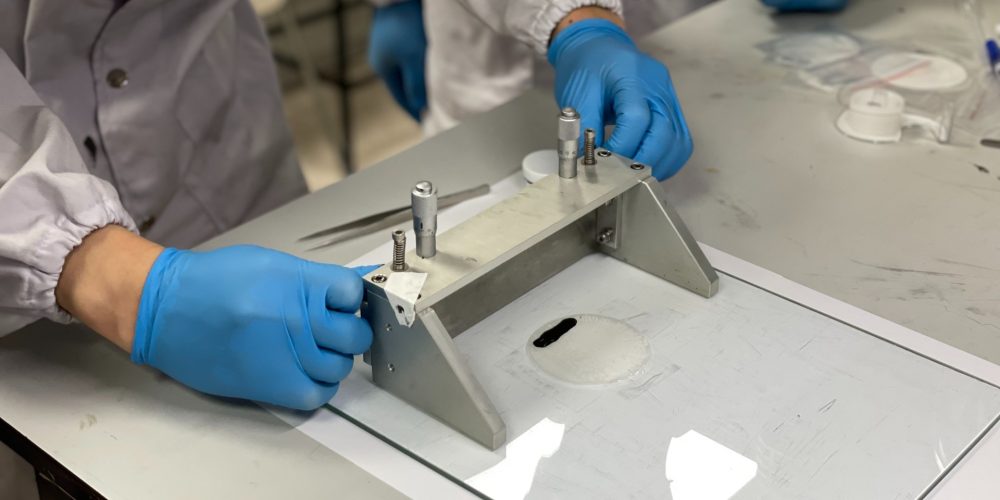
Scientists at Nanyang Technological University, Singapore (NTU Singapore) have developed paper-thin biodegradable zinc batteries. Once the batteries are expended, they break down in soil within weeks.
The NTU Singapore-developed zinc batteries are made up of electrodes (through which the electrical current leaves or enters the battery) screen-printed onto both sides of a piece of cellulose paper that has been reinforced with hydrogel. NTU Singapore explains how they made the batteries in an emailed statement:
To develop a thinner, lighter prototype with no packaging required, the NTU scientists adopted a “sandwich design” for their batteries – the electrodes are like the bread slices, and the cellulose paper that the electrodes are printed on is like the sandwich filling.
The fabrication process starts with reinforcing cellulose paper with hydrogel to fill up the fiber gaps found naturally in cellulose. This forms a dense separator that effectively prevents the mixing of the electrodes, which are formulated as “electrode inks” and screen-printed onto both sides of the hydrogel-reinforced cellulose paper.
The anode ink is mainly made up of zinc and carbon black (a conductive type of carbon). As for the cathode ink, the scientists developed one type with manganese and another with nickel as a proof-of-concept, though the research team said that other metals could possibly be used.
After the electrodes are printed, the battery is immersed in an electrolyte. A layer of gold thin foil is then coated on the electrodes to increase the conductivity of the battery. The final product is about 0.4mm thick – about the thickness of two strands of human hair.

In a proof-of-concept experiment described in scientific journal Advanced Science, the NTU team demonstrated how a 4cm x 4cm square of printed paper battery could power a small electric fan for at least 45 minutes. Bending or twisting the battery did not interrupt the power supply.
UnderstandSolar is a free service that links you to top-rated solar installers in your region for personalized solar estimates. Tesla now offers price matching, so it’s important to shop for the best quotes. Click here to learn more and get your quotes. — *ad.
In another experiment using a 4cm x 4cm battery to power an LED, the scientists showed that despite cutting away parts of the paper battery, the LED remained lit, indicating that cutting does not affect the functionality of the battery.
The NTU innovation shows a cheaper and simpler way of manufacturing batteries – by developing a single large piece of battery that can be cut to desired shapes and sizes without loss of efficiency. It could potentially help with the electronic waste problem as well, given that the printed paper battery is nontoxic, said the research team.
Assistant professor Lee Seok Woo, the study’s co-lead author, said:
We believe the paper battery we have developed could potentially help with the electronic waste problem, given that our printed paper battery is non-toxic and does not require aluminium or plastic casings to encapsulate the battery components. Avoiding the packaging layers also enables our battery to store a higher amount of energy, and thus power, within a smaller system.
Going forward, the NTU team hopes to demonstrate the complete integration of the printed paper battery to other printed electronics, electronic skins, and energy storage systems deployed in the environment.
Read more: Here’s what the US needs to do to meet snowballing battery demand
Photo: NTU Singapore
Subscribe to Electrek on YouTube for exclusive videos and subscribe to the podcast.
Author: Michelle Lewis
Source: Electrek



